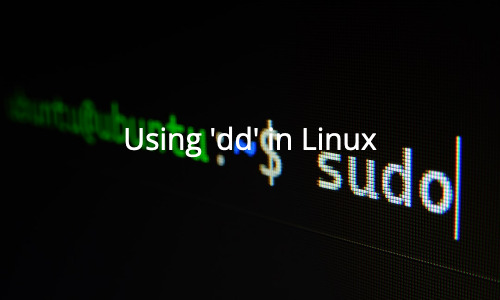Table of Contents
Introduction
The dd command is a powerful utility in the Linux ecosystem, often used for low-level operations such as copying and backing up data. While it is extremely versatile, it is also unforgiving if used incorrectly. One wrong move, and you could overwrite important data. This blog post aims to introduce the dd command, break down its syntax, and explore its potential uses.
Warning: Misuse of the
ddcommand can result in data loss. Always exercise caution and double-check your commands before executing them.
What is dd?
The dd command stands for Data Duplicator. It reads from an input file or stream and writes to an output file or stream, all while allowing various transformations in between. While it was originally designed for block-level operations on Unix systems, its application has expanded over the years.
Basic Syntax
The basic syntax of the dd command is as follows:
dd if=input_file of=output_file [options]
if: The input file or stream.of: The output file or stream.options: Additional flags and settings to customize the operation.
Commonly Used Options
bs: Block size; sets both input and output block size.count: Number of blocks to copy.skip: Skip a certain number of blocks from the beginning of the input.seek: Skip a certain number of blocks from the beginning of the output.conv: Various conversions likenotrunc,noerror,sync, etc.
Practical Uses
Disk Cloning
One of the most common uses of dd is for cloning disks or creating disk images:
dd if=/dev/sda of=/dev/sdb bs=64K
Here, we’re copying data from /dev/sda to /dev/sdb with a block size of 64 kilobytes.
Caution: This will overwrite
/dev/sdb. Make sure you back up important data.
Creating Disk Images
You can create an image of a disk, which is useful for backups:
dd if=/dev/sda of=backup.img bs=64K
Writing Disk Images to Media
You can write disk images, like those commonly used for Raspberry Pi setups, directly to an SD card:
dd if=raspbian.img of=/dev/mmcblk0 bs=4M
Zeroing Out a Disk
The dd command can be used to securely erase data by overwriting it with zeroes:
dd if=/dev/zero of=/dev/sda bs=4M
Data Recovery
dd can also be used to recover data from damaged media by ignoring read errors:
dd if=/dev/sda of=recovery.img bs=64K conv=noerror
Precautions
- Double-Check Disk Names: Always double-check the disk names (
/dev/sda,/dev/sdb, etc.) before running addcommand. - Use Small Blocks for Testing: Initially use a small
countvalue to ensure that you are not making a mistake. - Check Command Syntax: Verify your command syntax by looking it up in the man pages or online sources before execution.
Conclusion
The dd command is powerful but should be used cautiously. While it’s a go-to tool for tasks like disk cloning, backup, and recovery, misuse can result in irreversible data loss. Therefore, it’s essential to understand its syntax and options well, and always double-check before hitting the ‘Enter’ key.




